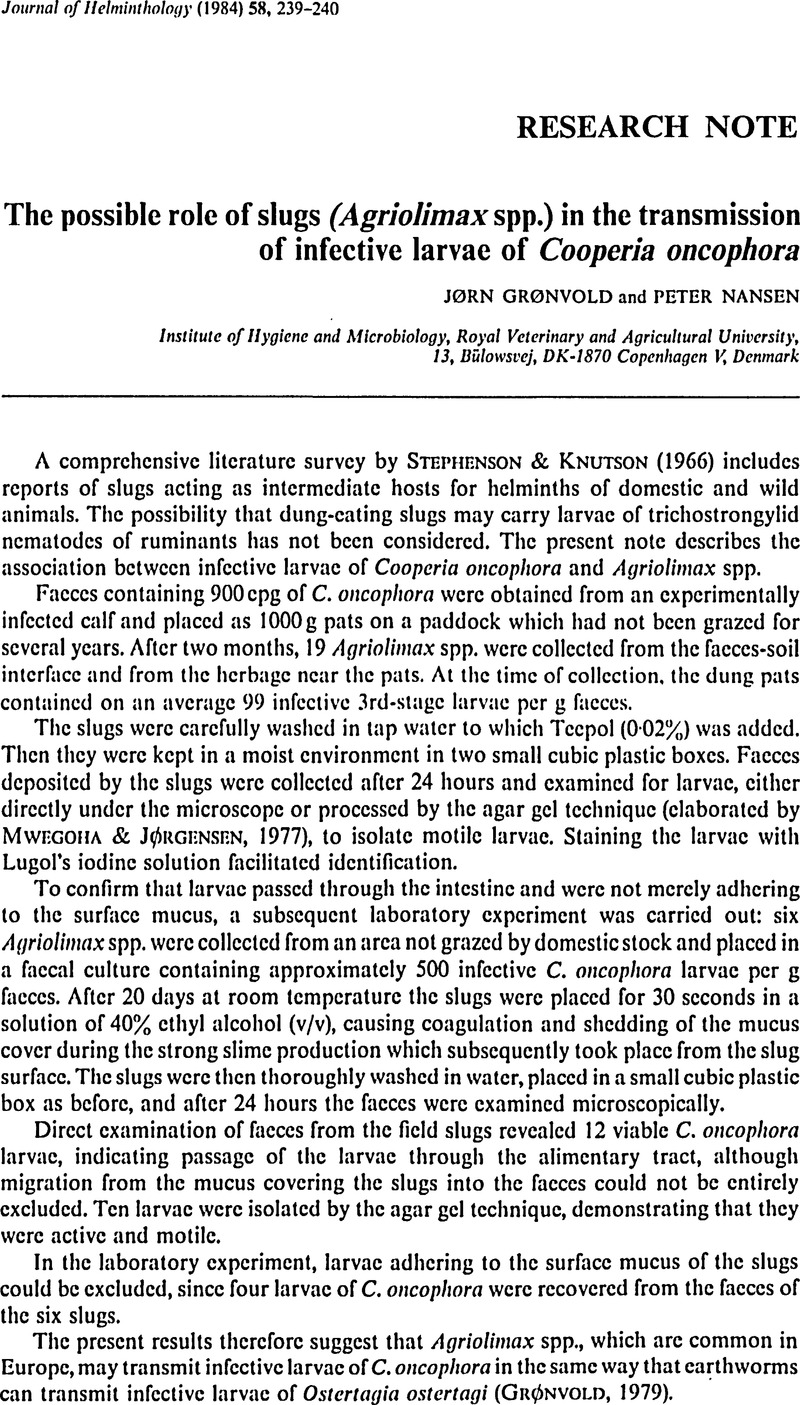Crossref Citations
This article has been cited by the following publications. This list is generated based on data provided by Crossref.
Gronvold, Jorn
1987.
A Field Experiment on Rain Splash Dispersal of Infective Larvae of Ostertagia Ostertagi (Trichostrongylidae) from Cow Pats to Surrounding Grass.
Acta Veterinaria Scandinavica,
Vol. 28,
Issue. 3-4,
p.
459.



